#Cumann na mBan
Text
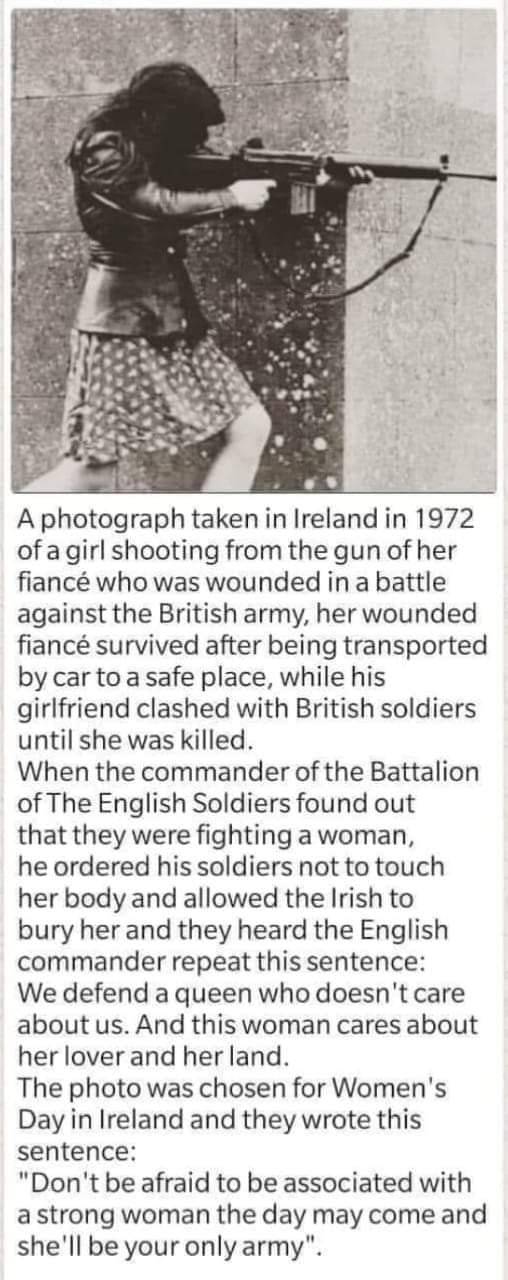
"Don't be afraid to be associated with a strong woman - the day may come and she'll be your only army".
344 notes
·
View notes
Text
#OTD in 1914 – Cumann na mBan, Irish women’s Republican movement, was founded.
Ní saoirse go saoirse na mban.
Over 100 women gathered in Dublin to discuss the role of women in the lead-up to revolution. The meeting, at Wynn’s Hotel, was presided over by Agnes O’Farrelly.
The first provisional committee of Cumann na mBan included Agnes MacNeill, Nancy O’Rahilly, Mary Colum, Jenny Wyse Power, Louise Gavan Duffy and Elizabeth Bloxham.
They adopted a constitution which stated…

View On WordPress
#1916 Easter Rising#Agnes MacNeill#Agnes O’Farrelly#Constance Markievicz#Cumann na mBan#Dublin#Elizabeth Bloxham#History#History of Ireland#Inghinidhe na nÉireann#IRA#Ireland#Irish Citizen#Irish Civil War#Irish War of Independence#Jenny Wyse-Power#Kathleen Clarke#Louise Gavant Duffy#Mary Colum#Mary MacSwiney#Muriel MacSwiney#Nancy O’Rahilly#Nora Connolly#Wynn&039;s Hotel
13 notes
·
View notes
Text
Cumann na mBan and the Irish Civil War
Despite the many challenges facing them, women were not passive observers of the Irish War of Independence or the Irish Civil War. Many women joined Cumann na mBan, a nationalist organization that worked closely with Sinn Fein and the IRA to achieve an independent Ireland. Cumann na mBan would be the first organization to reject the treaty and provide the anti-treaty side with its iron and…
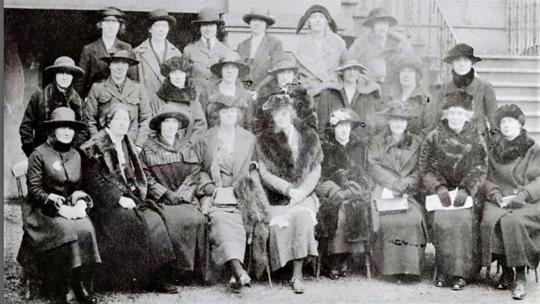
View On WordPress
#Constance Markievicz#Cumann na mBan#cumann na saoirse#IRA#Ireland#irish civil war#Irish Republican Army#Irish War of Independence 1919-1921#Irish women#Mary MacSwiney
1 note
·
View note
Text
1 note
·
View note
Text
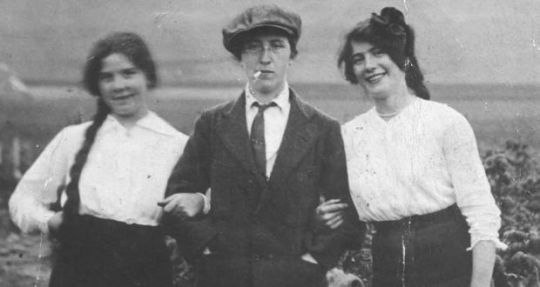
Margaret Skinnider (1892 -1971) pictured in the centre.
She was a Scottish-Irish teacher, Irish Revolutionary, member of Cumann na mBan, Easter Rising veteran, sniper, Irish Civil War veteran, trade unionist, feminist, and lesbian. Her partner was Nora O'Keefe, a fellow revolutionary, feminist and trade unionist.
#ireland#irish history#margaret skinnider#lesbian history#feminism#sometimes you gotta post pics of your fave historical figure
1K notes
·
View notes
Text
here's a list of cool PDFs I have saved on my drive that I thought other people might like too:
"Cleaning Bones" by Stephen P. Nawrocki, PhD, University of Indianapolis Archeology & Forensics Laboratory
"Cultural Appropriation in Contemporary Neopaganism and Witchcraft" by Kathryn Gottlieb, University of Maine
"The Voyage of Bran (Imram Brain)" translated by Kuno Meyer
"Duanaire Fionn (The Book of the Lays of Finn)" Cumann na Scríbheann nGaedhilge/Irish Texts Society
"Early Gaelic Dress" by Scott Barrett
"The Voyage of St. Brenden: Celtic Otherworld Tale, Christian Apologia, or Medieval Travelog?" by James E. Doan
"Is Deithbir Disi [it is appropriate (that she would behave in this way)]: Applying the Lens of Gender Parody to Medb in the Old Irish Ulster Cycle" by Diana Veronica Dominguez
"A Discussion of the Magical Attributes of the Hero in Fenian Literature, with specific reference to the tale 'The Pursuit of Diarmuid and Gráinne'" by Oliver Gerler, University of Limerick, IE
"The Plain of Blood; a Study of the Ritual Landscape of Magh Slecht, Co. Cavan" by Kevin White
"The Iona Chronicle, the Descendants of Áedan mac Gabráin, and the 'Principal Kindreds of Dál Riata'" by James E. Fraser
Issue of "An tÓglach" magazine, vol. IV no. 12, with a detailed article about Cumann na mBan's efforts during the week of the Easter Rising written by Nora O'Daly
"Gaeilge Gan Stró! Beginners Level" by Éamonn Ó Dónaill
1K notes
·
View notes
Photo

Location and size of Cumann na mBan branches in 1921. Cumann na mBan was an all-female rebel group which fought alongside the IRA in the Irish War of Independence.
199 notes
·
View notes
Text
So I’m aware this is not the kind of stuff I normally post but I just wanted to share this knowledge with you because I think it’s amazing. So right in Dublin City centre there’s this park called Stephens Green. And it’s a relatively normal looking park next to tonnes of shops. But in the year 1916 it was the site of one of the biggest conflicts in the Easter/1916 Rising in which some Irish Republican paramilitaries (not the IRA they didn’t exist yet) tried to overthrow British rule in Ireland and get a republic so Irish people could run their own affairs. It’s one of the most significant events in Irish history because, though it was an utter military failure due to frankly ridiculously small numbers and firearms, it is seen as one of the defining events that led to our independence in 1921 after the war of independence.
So during this conflict the rebels took over the park due to its location in the city centre. They barricaded the gates and dug trenches. This was called the battle of St Stephens Green. The British soldiers were lined up outside surrounding it with guns and the conflict raged on for days with several civilians as well as members of both parties being killed and injured.
But during this one groundskeeper by the name of James Kearney decided he had higher priorities. Twice a day the Irish Citizens Army and Cumann na mBan (two Irish military forces that i feel it should be mentioned that the former allowed women operate on the same level as men within its ranks and the latter was solely comprised of women though much smaller) called a truce with the British army so that he could feed the ducks. Yes you read that right. In the height of the battle with bullets flying back and forth over trenches they would call a truce for like twenty minutes so this man could get past the barricades to feed the ducks. Only in Ireland.
44 notes
·
View notes
Note
I'm not sure if I've asked this before so ignore if I have but what things do you wish were taught about more in Irish history i secondary schools/universities? I personally always found it disgraceful how little Cumann na mBan is that about and how we weren't taught about the fact that the Black and Tans weren't just British, but irish soldiers that fought in ww1 too.
Ok so let me preface this by saying that my secondary school experience was extremely nontraditional in ways I don't want to get into + I did not attend secondary school in ireland & so I everything I know about irish history in regular irish secondary schools or regular secondary schools anywhere else is secondhand -- so forgive me if this is something that ppl actually are taught & I just don't know about it. anyway with that over with this is very specific but I wish that people were taught more about the influence of the french revolution on the invention of irish republicanism. not even in a people need to be more pro-revolution way, I just wish that more people would acknowledge the fact that the united irishmen and their contemporaries, though they obviously grew to be extremely unimpressed with the french after the bantry bay disaster, were directly inspired by the frev in many many ways and even took some of the ideas that people praise them for directly from it, rather than pretending like the UI being similar to groups like the jacobins was either an accident or not important. also, relatedly, I wish that, when teaching about how important the frev was for the development of the UI, people stopped doing the thing where they act like the jacobins in france were the most evil thing in the entire world but the people in dublin or belfast who held the exact same beliefs were right about everything because that is, to put it diplomatically, a completely nonsensical way to think about it. again I'm not insisting everyone love robespierre forever but let's be consistent here at least
8 notes
·
View notes
Note
Loving the cumann na mBan flag by your desk ✊️
:)
14 notes
·
View notes
Text
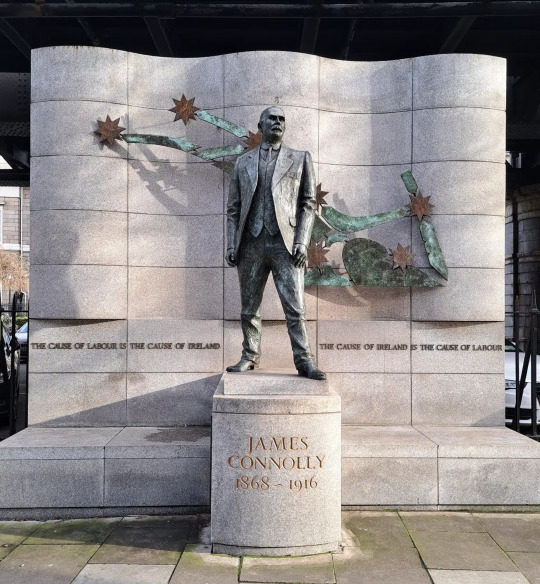
Su Beresford Place, di fronte la Liberty Hall, si trova la statua in bronzo a grandezza naturale di James Connolly. L'opera, eretta a Dublino nel 1996, è stata creata dal grande artista irlandese Eamonn O'Doherty. Non è un caso che il memoriale del rivoluzionario scozzese si trovi proprio nei pressi dell'edificio che oggi ospita gli uffici del più grande sindacato d'Irlanda, il SIPTU Trade: proprio qui, nel lontano 1916, molti membri dell'Irish Citizen Army e del Cumann na mBan si riunirono la mattina del lunedì di Pasqua, prima di assumere le posizioni loro assegnate e prima dell'eroico assalto al General Post Office. Assalto che lo vide assoluto protagonista.
Dietro alla maestosa figura di Connolly, ecco comparire in basso una delle sue citazioni più celebri, "The cause of labour is the cause of Ireland, The cause of Ireland is the cause of labour": parole che dimostrano la grandezza del personaggio James Connolly.
Rivoluzionario, sindacalista, scrittore, patriota.
🇮🇪✊️⛓️
© Irish tales from Rome
2 notes
·
View notes
Text
#OTD in 2018 – A new stamp goes on sale to commemorate the centenary of the founding of Cumann na mBan, designed by Ger Garland.
Featuring Cumann na mBan members leading the funeral of people shot during the Howth arms landing. Cumann na mBan was a women’s nationalist organisation founded to advance the cause of Irish liberty. Its constitution provided for the use of force by arms against British forces in Ireland. Founding members included Jennie Wyse Power, Agnes O’Farrelly, Louise Gavan Duffy and Agnes MacNeill.
Their…
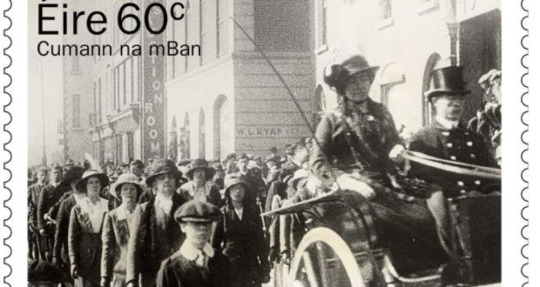
View On WordPress
#1916 Easter Rebellion#Agnes MacNeil#Agnes O’Farrelly#Commemoration Stamp#Cumann na mBan#Dublin#GPO#Howth Arms Landing#Ireland#Jenny Wyse-Power#Louise Gavan Duffy#Northern Ireland
7 notes
·
View notes
Text
Episode 59 - Cumann na mBan During the Irish Civil War
Listen to the last episode of 2023! Learn the vital role Cumann na mBan played in resisting the treaty and assisting the anti-treaty forces.
Join my Patreon
Follow me on Tiktok and Instagram
RSVP to Never Again Chicago’s Legends, Latkes, and Liberation Fundraising Event
Donate to Refugee Community Connection
Free, free…

View On WordPress
#Cumann na mBan#Featured#IRA#Ireland#irish civil war#Irish Republican Army#Irish War of Independence 1919-1921#Irish women#season 3 the irish civil war
0 notes
Text
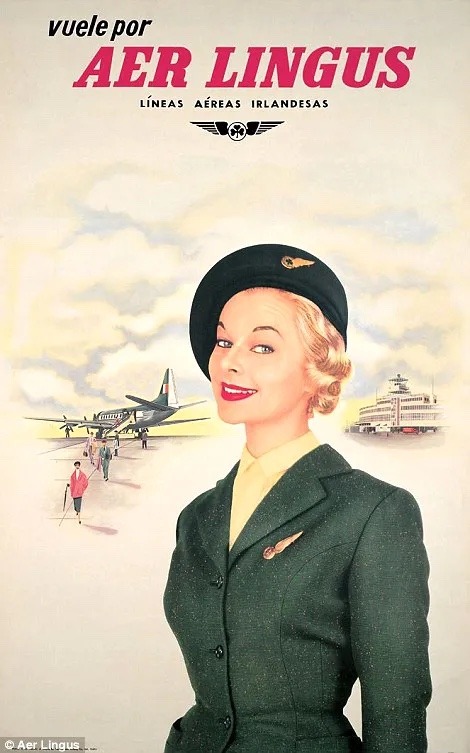
The Aer Lingus uniform designed by Neillí Mulcahy which looks like the uniform of the Republican women’s army (Cumann na mBan) co-founded by her mother.
Neillí Mulcahy is also well known for designing the uniforms for air hostesses of the Irish Aer Lingus.
It looked like a new Celtic revivalism in the 1950s as Elizabeth McCrum explains in her book (Fabric & Form – Irish Fashion since 1950):
“Designers of the 1950s were highly aware that their Irishness was their great marketing strength. They used conspicuously Irish fabrics and very often the titles given to each model in a collection were rather laboured evocations of ‘Celticism’. Examples taken at random include Irene Gilbert’s ‘Kilkenny Marble’ and ‘Irish Diamond’, Sybil Connolly’s ‘Irish Washerwoman’ and ‘Bainin’ [báinín in Irish means woven woollen cloth or flannel], Raymond Kenna’s ‘Strongbow’ and ‘Druid’s Spell’, Neillí Mulcahy’s ‘Stirabout’ [the name of a famous Irish porridge] and ‘Aer Lingus’.”
www.nolwennfaligot.fr. (n.d.). IRISH FASHION: THE THREAD OF CELTIC HERITAGE. [online] Available at: https://www.nolwennfaligot.fr/amp/irish-fashion.
0 notes
Text
Cás Trófaí Oscailte na hAstráile: Ceardaíocht Louis Vuitton
Chuaigh Louis Vuitton i gcomhpháirtíocht le hAstráile Oscailte (Aussie Open) chun dhá chás trófaí shaincheaptha uathúla a chruthú a thaispeánfaidh an dá phríomhchorn i gCluiche Oscailte na hAstráile: Corn Cuimhneacháin Daphne Akhurst do na mná agus Corn Dúshláin Norman Brooks do na fir.

Ba iad ceardaithe saineolaithe Louis Vuitton a rinne na cásanna trófaí i gceardlann Asnières lasmuigh de Pháras. Featuring frámaí adhmaid, ciumhsóga leathair lozine clasaiceach agus cosantóirí cúinne práis. Ritheann móitíf Monogram Louis Vuitton ar fud an struchtúir, an t-aon ghné shainiúil ná "V bán", rud a chiallaíonn go dtrasnaíonn "bua" agus "Louis Vuitton".
Le linn an phróisis dearaidh, d'oibrigh Louis Vuitton go dlúth le Cumann Leadóige na hAstráile chun an taobh istigh den chás trófaí a mhaisiú le microfibre gorm in ómós do chúirteanna gorm Chumann Leadóige na hAstráile. Tá lógó Oscailte na hAstráile cumhdaithe freisin ag bun an chláir, nod don chomhpháirtíocht.
Dúirt Craig Tiley, Príomhfheidhmeannach Leadóige na hAstráile, “Tá cáil ar Louis Vuitton as a bhagáiste agus táimid thar a bheith sásta leis an mbagáiste saincheaptha iontach a chruthaigh muid dár gcraobh stairiúil Oscailte na hAstráile. le haghaidh staire, traidisiúin agus éachtaí agus scileanna finscéalta."
Dúirt Pietro Beccari, Cathaoirleach agus Príomhfheidhmeannach Louis Vuitton: "Táimid ag Maison ag cruthú bagáiste a chuimsíonn spiorad na sármhaitheasa, na cruthaitheachta agus na hintleachta le breis is 170 bliain, luachanna a roinneann muid le príomhimeachtaí spóirt an domhain."
Cuirfear tús leis an dá chás trófaí ag oscailt Oscailte na hAstráile an 14 Eanáir 2024, agus cuirfear ar taispeáint sa chúirt iad ag tús chluichí ceannais singil na mban agus na bhfear an 27 agus an 28 Eanáir. Is cinnte go gcuirfidh an comhoibriú seo a bhfuiltear ag súil leis le fada níos mó sóise isteach i gCluiche Oscailte na hAstráile.
0 notes
Text
Echoes of our Past | March 10th 1923

Librarian Richard Forrest takes a look at news highlights published in The Echo 100 years ago this week.
Road Smash at Carrigrohane
At about 11 o’clock last night the Fire Brigade ambulance was called out to Carrigrohane where several persons were lying injured in a car smash. It appears a pony and trap collided with two Scotch carts and a military car coming along then ran into one of the carts. Several persons were thrown on the road. The injured were brought to the Mercy Hospital and a man named Donoghue, belonging to Blackpool, was found to have sustained severe injuries to the head, as well as a fractured dislocation of the hip joint. He lies in a dangerous condition. Three soldiers were also detained.
Mrs. Powell, Mount Nebo House
I had put the younger ones (7,5 and 3) to bed and was drawing my chair up to the fire at about 8 o’clock when I heard a rap at the door and the command “put your hands up!” I looked around and saw four young men with my own two lads. I thought they were playing a joke and said, “indeed I will not!” I suddenly realised these were real guns and, though terribly frightened, in a calmness born of despair I said, “I must stir and go to my babies” and rushed to the door. The muzzle of one of the revolvers actually struck my chest but to my surprise I got up the stairs safely. Little Brenda was hysterical at the bedroom door and a man was sprinkling petrol from a can over the other two in bed. I got the children downstairs and there were men all over spilling petrol. I asked the one who appeared to be the leader what was meant by this conduct. He replied, “are you Mrs. Bowles?” I said, “no, I am Mrs. Powell and these are my babies”. Said he, “your house is to be burnt as a reprisal for the arrest of the Cumann na mBan members”. I told him I was not responsible for the arrest of anyone and was a member pf Cumann na mBan before any of them. He then used some threatening language and said get the children out. I said I had to have some warm clothes. the children were trembling, and I realised my most treasured possessions, including the letters from my late husband and brother would be destroyed. I rushed to the writing table and two shots rang out. Gathering my little flock, I rushed out the front door. More shots rang out and I lay dazed, wondering, after some time elapsed, why the house was not ablaze. Then I heard a friendly voice say, “anybody hurt?” and was surrounded by men of the dear green uniform. They told me “Scottie” was wounded and there was an agonising search. Our relief was great when we found he was not too bad. He undoubtedly saved my house. Houses and women and children cannot hit back, we expect another attack, but God is good, and so are the Fianna Fáil, the soldiers of Ireland. (Mary Powell was a sister of Michael Collins. Mount Nebo is off Blarney Street).
Irregular Warning on Bandon Dances
The following has been served on some lady members of a dance committee in Bandon by O.C. I.R.A. 1st Battalion, No. 3 Brigade: “I have been informed that you have taken part in organising dances in the town of Bandon recently. Take warning that if you attempt these dances again while the young soldiers of he Republic are being done to death by a band of ruffians calling themselves a Government, you will be severely dealt with. Remain within the town of Bandon until further notice. Failing to comply with this order will necessitate me to take action of a drastic nature”.

1921 All-Ireland Hurling Final
Despite restricted railway services the attendance at Croke Park last Sunday for Limerick vs. Dublin was on the big side. There were 19,000 at the match yielding gate receipts of £1,080. Croke Park now possesses a number of excellent stands and presented a lively and intensely animated appearance. The best of good feeling was in evidence and though there was not much to enthuse over on the standard of play, it is but justice to the Central Council to state that the arrangements for the big fixture were perfection. It was a hard-fought game in which accidents and frees were rather on the too numerous side. Munster’s representatives suffered pre-match disadvantages attributable to circumstances of a very obvious character, but it gradually emerged that Dublin were altogether outclassed on the wings and less and less likely to hold their title. The training the Garryowen men had put in worked to the good, supplemented by an indomitable determination to capture the magnificent new trophy. The donor of which, Mr. Liam McCarthy, London, was unavoidably absent on the day. Dublin have altogether gone off the form lately shown against Cork but, to their credit, never relaxed it trying to limit the deficit (8-5 to 3-2).
The Thrush’s Pathetic Note
Now we come to strike a pathetic note. A dingy street where, all day, ragged children play. This narrow dwelling place of the struggling poor. Cardboard and cloth are more plentiful than glass in an upper window. Each morning a hand protrudes to thrust out a cage that is to hang on the wall till darkness gathers. Within is a thrush. That fine, speckled, white-breasted, large-eyed bird, sings on the perch throughout the day. The creature of the thicket and the brake gazes downwards upon the ragged children and upwards to the strip of sky across which sometimes it sees its fellow creature’s career in full flight to the hills, the woods, the meadows. Whether the thrush sings loud or low, it hops in weary monotony back and forward. Little does it dream that it occupies a tiny space in that newspaper which a shouting newsboy distributes as he runs along the path below. There on the back page are the words, “A singing thrush for sale”. Tomorrow someone will come, the cage will be drawn in, money will jingle and away – where? To the native wilds? Alas, no. Only to some other, perhaps more obscure neighbourhood. Some darker, dingier prison house. Yet those bird dealers are not gaolers. Indeed, they are kind and considerate to a degree. But you who have heard in March the song of the brown thrush at the end of your garden, or above your heads in the woodside road – you at least will read the advertisement with deeper and sadder thoughts than the ways of barter know.
0 notes